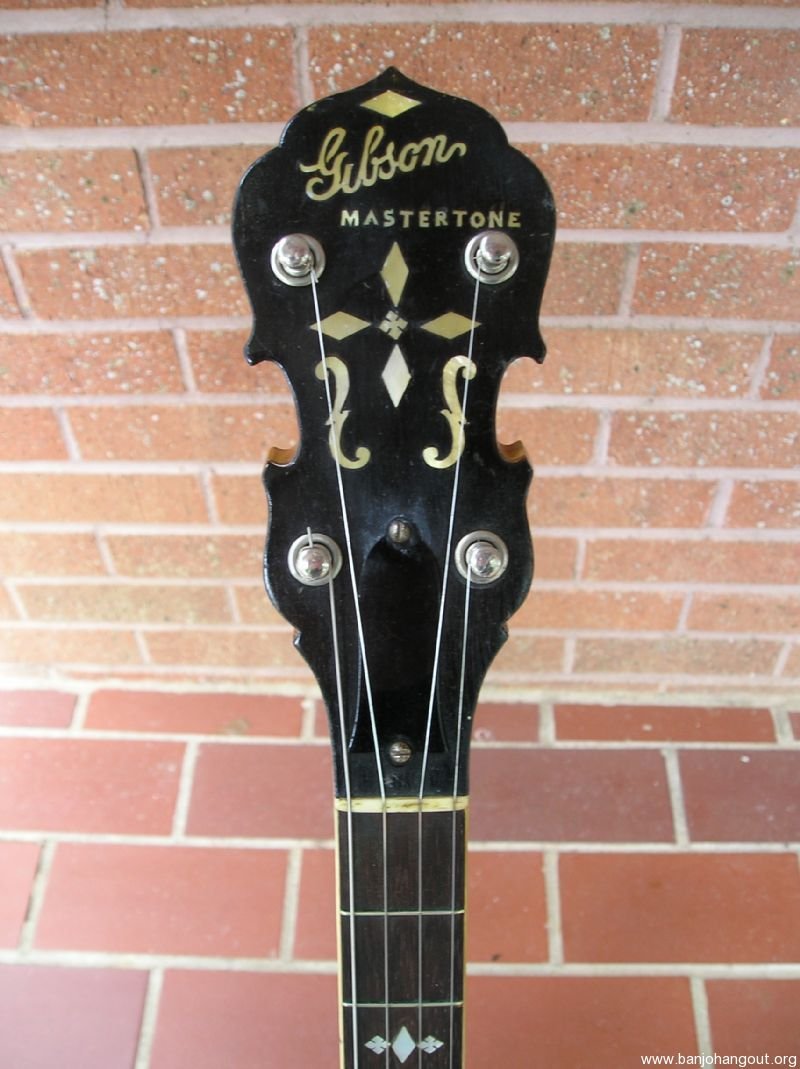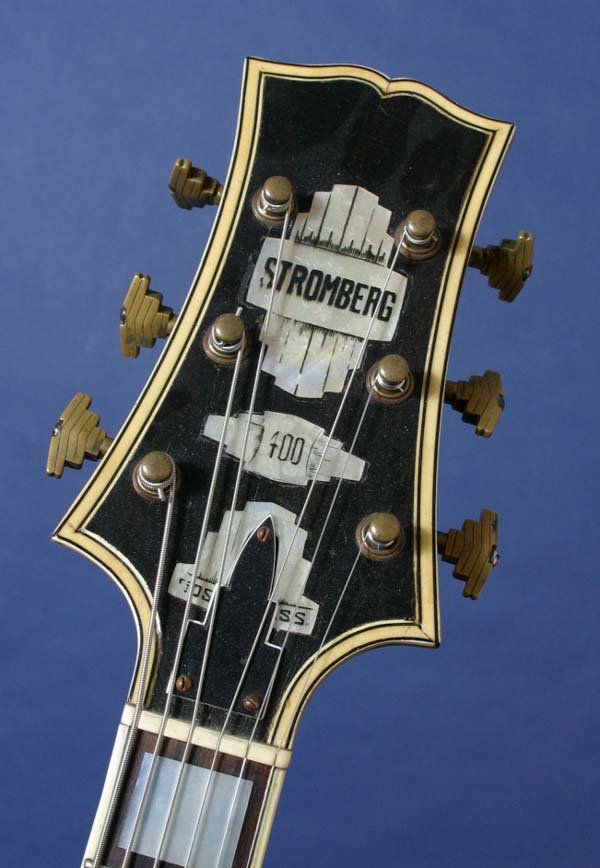I mentioned Gruhn bringing the snakehead to Guild in the "D60" thread, I think? Always dug it on my D25, thought it was "elegant", but didn't know the source at the time.
With apologies for the veer, and you likely know this but some others might appreciate the insights since there's generic guitar "voicing theories "expressed:
I think George himself actually said he designed it to give the strings a straighter course to the pegs from the nut. IIRC the first Guild he did that used it was the Nightbird prototype ca '84.
*** It was also a design feature of the F44 and D44, his first true production designs IIRC, and their descendants like the GF series. Appeared on D25's in '87, think that was the first time it was put an existing (as opposed to new) model.
The thing about headstocks though, is that I'm actually in that school that believes headstock mass affects tone (I prefer the term "voice", these days), however subtly.
I came aross the idea here about 1 years back and remembered the day I felt the D25's neck vibrating in my hand, first time I ever felt that in any guitar. It was about a year old, around 250 hours of playing time on her, on nice warm upper '70's spring day in the park, with a fresh setup, and I realized it sounded better than it ever had before. (That puppy could be heard across the park, still can.

)
So while I was strumming and feeling the neck vibrate I realized there must be energy from the top/sides/back getting into the neck (via heelblock?) and maybe even getting back into the top in a kind of "super-excite" mode? Maybe via the fretboard extension?
Then I wondered what kind of damping effect the headstock exerted. Having been exposed to a
little electronics theory, I hypothesized it would function like a microwave termination, that is, absorb the energy in the neck with its mass. Then it was time for the montuna so went back to playing but always remembered the moment. Thought; "AH,
this must be what's meant by 'the opening up moment'" (Which I also subscribe to, but only ever felt it with the D25. )
The D40 has a traditional Guild "paddle" style headstock and I never felt its neck vibrate like the D25's, but it's also a "tank" compared to the '25. It took about 7 years to start opening up and it was gradual, but I played it far less than the '25 for the first 4 or 5 years.
Your thoughts?
*** Found the interview, it was '85:
https://www.vintageguitar.com/3275/1985-guild-nightbird-prototype/

The neck's contribution to the tone of a guitar is a complicated and confusing thing for me.
As you mentioned, back in the 80s, there was a widespread belief that adding mass to the peghead would make the guitar louder and/or increase the guitar's sustain.
There were some other items besides the peghead that were considered to be improvements too that followed the same theory; heavy metal bridge pins and a solid brass saddle in the bridge were some, and neither made any improvement.
The brass saddles killed a guitar's volume when I replaced the guitar's bone saddle with a brass rod experimentally. The metal bridge pins did nothing at all to the guitar, but they were so slick they were hard to grasp when I pulled them out of the bridge.
At one time, some little company actually made a thick brass plate that was held to the back of the peghead by the tuning pegs.They were supposed to be the miracle cure, and installing one was a fairly big job. The tuning pegs all had to be removed to fit the plate next to the wood and then re-installed.
Since guitars have many different peg spacings, the shaft holes in the brass plate have to align precisely to the holes in the peghead.
The plate fits next to the wood, and the pegs' bases hold it in place. Lots of different plates to be made for sale to fit different guitars!
I played a guitar with one, and all I noticed was it made the guitar neck-heavy and harder to tune.
The guitar was a Gibson J45, and I couldn't hear any big difference between it and a bunch of other 45s I played like it.
But logic says higher mass takes more to excite vibrationally than lower mass. I don't know physics, but that would appear to be true, in a general way.
The strings are pretty weak mechanical exciters on any acoustic guitar; the wooden top on a guitar has to be light and stiff to translate and amplify the weak vibrational force of the strings. Adding any more mass on the top sure doesn't work at all.
So isolating the top from the neck by adding mass to the neck would seem to be the trick. But it doesn't in reality.
Like you, I've noticed that a guitar with a neck that has vibrations I can feel in my left hand tends to be a louder guitar than one with a non-vibrating neck. More sustain, too. Both in pretty small additions.
The vibrations in the neck don't depend on the thickness or thinness of the neck- big thick necks can really vibrate, and really thin necks can vibrate so much they're like diving boards that just don't stop vibrating. Too much of a good thing, sometimes.
Could it be that a vibrating neck actually works in reverse of that logic? I think so. The vibration of the neck could feed into the top from the tight joint that holds the neck on the body. The neck's vibrations could make the top vibrate more strongly when the string attack was struck, and then could keep the top vibrating longer, which would increase the sustain.
I actually noticed all this more on my favorite banjo than on a guitar. Banjos are much stronger frames for the vibrating surface- the head- than guitar tops. The banjo head is a very thin membrane that's stretched tightly by a massive brass hoop that is directly connected to the rim, which is 3/4" thick and clamped down on the top by the hoop and by the flange that holds the resonator (the back) to the banjo.
So when it comes to mass and all the other stuff, the banjo has a lot more of it.
Yet the liveliest banjos all have necks that vibrate more strongly than guitar necks. The neck's connection to the rim of a banjo is as weak as the connection on a guitar is strong.
Mando players agree; they all want a mandolin that's jumping around in their hands while playing it, and the more vibrations the neck gives off, the better.
While dedicated solid-body electric guitarists swear the massive body's puny string vibrations make all the difference in their guitar.
So I honestly don't know which theory is correct. I tend to think this is something that simply can't be generalized and applied to every guitar. And what might work on an amplified instrument might not work on an acoustic instrument.
I only know what I can hear and feel nowadays. I've given up on mechanical theories that try to define subtle physical sensations.
For sure, the only certain thing I know that improves any guitar is playing it. A lot, all over the neck, playing it hard enough to really force it around sometimes, and playing it as softly as possible other times. And then allowing time to do it's thing.
Everything else is just voodoo in my opinion. Fun to mess around with, for those who are inclined, and good for sales, but will make an improvement only a dog can hear on a guitar.
This includes the idea of straight string pull on a peghead. That's probably a good thing that helps prevent string breakage, but I doubt it does anything tonally for the guitar good or bad.

